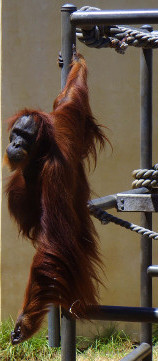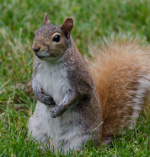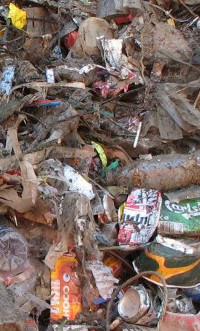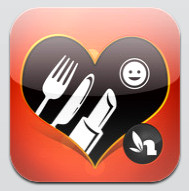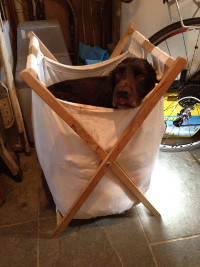Save the Planet!

STOP saying that, because the planet is in no danger.
Just look around, Earth doesn’t need life; there are plenty of lifeless planets.
It’s all the living things on this Planet that are in danger.
The planet ‘Earth’ is going to keep on spinning for a long time yet. So instead you could say: Save us! Save us! but who would want to save us? We have to save ourselves.

To save ourselves, we have to consider what we need, you know, REALLY need.
What we really need:
There’s a much used ‘Hierarchy of Needs’ developed by Maslow, and whilst we may dispute some aspects of his theory, the basics are pretty sound. We need clean air, clean water, clean food and clean shelter. It’s very simple.
Air Water Food Shelter
Life on earth has evolved in such a way that these basic needs are met by the intertwined life cycles of all living things together with ‘Earths’ geology. That’s the earth doing its thing in a very efficient manner and at NO MONETARY COST to us. There is a natural cost, though, and that is that everything has to continue to do its share in the cycle of life.
Put simply, everything that grows needs to consume something to get the materials to build new cells. When a living thing dies, its’ cells have to become available to nourish new living things to grow. And non-living things need to remain available to this cycle of life; we are still very ignorant about our dependence on things like minerals in our physiology.
Without this cycle, there is no life, but there will still be a planet. Earth doesn’t need us, but we REALLY need Earth, we absolutely rely on the lifecycle that exists on earth.
Earth doesn’t belong to us
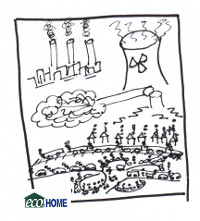
The life cycle on Earth flourishes with so little effort on our part, that we have assumed it will always be so. Earth has met our most basics needs so well that we have moved on up the hierarchy of needs to the top level. We consider ourselves the smartest creatures, because we have fulfilled all our ‘needs’, and most of our ‘wants’. Well, some of us have.
We consider ourselves the smartest even though we’ve trampled others on the way; we’ve used, abused, extorted and defiled our way to the top. In our rush to be at the top of the life cycle, we’ve dirtied the air, fouled the water, and compromised our food. And now we’re starting to see our shelter on Earth at risk.
With dirty air we’re developing breathing problems and using air purifiers. With dirty water we’re seeing disease, and use water filters. With compromised food we’re suffering bad health and taking multivitamins and minerals. Broken shelters from floods, fires, storms and earthquakes see us scurrying to rebuild; but even with our increase in numbers we can’t keep up, people are without shelter in many places all over the earth. We’re not so smart, after all.
We’re not so smart because
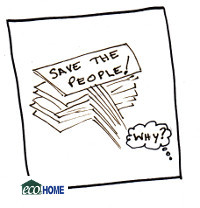
Our air filters don’t treat the dirty air problem. Plants treat this problem; we need a better balance of plant life to clean our air.
Our water filters either don’t work well enough, or work so well that they remove even the beneficial minerals from the water. Nature cleans water for free, by evaporating it then bringing it back as rain, or by filtering it through the soil and bringing it back through springs that become creeks and rivers.
Our food is compromised by the use of chemicals which remove all the minerals from the soil. The plants and animals that we eat used to provide us with all the vitamins and minerals we need. Now we have to take ‘supplements’, for things which we used to get free, from nature.
Clean shelter. Here’s something we appear to have done pretty well at. But look closely, if you want to find a place to live that has clean air, clean water, and good soil, you have to look pretty hard. And these simple things are the basics of life; we’re not looking for anything fancy. Most places of shelter suffer an affliction, there is either
• Pollution (dirt) from vehicles, a coal mine or power station dirtying the air, or
• gas fracking poisoning the air, the soil and the groundwater, more dirt
• pollution from industry dirtying the air, water and soil
• pollution (dirt) from chemical monoculture farming running into the creeks, rivers and oceans
• pollution (dirt) in the form of plastics and other things that don’t biodegrade; these things have been made with molecules which are now no longer available to the life cycle.
• Or exposure to a new, violent climate that brings hurricanes or cyclones, floods and fires with ever increasing frequency. We have to invent better emergency shelters because we have so many natural disasters now, we’re just moving from crisis to crisis.
A plague of humans
The life cycle on Earth is out of balance.
We have seriously eroded the foundations of our life; not the planets’ life.
We work every day to fulfill our wants, but the supplies for our basic needs are fast disappearing.
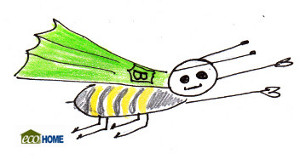
We can’t bring them back, unless we can get really smart and work together with ALL living things to regain an ecosystem that is in balance.
The rare conditions that have prevailed on earth to enable life forms to evolve are rapidly changing to exclude the larger life forms, such as humans. Yes, you, it’s time to move;
Clean up the mess you’ve made on this planet, or find a new planet.
PS: If you’re thinking “Some would say that we’re doing very well, there are so many of us, we’re thriving!” Think about locust plagues. What happens to a plague of animals when they have devastated their food supply?
Plagues flourish into oblivion.
We carelessly kill the life that sustains us
 When we abuse Earth’s eco system, when we remove parts of the cycle of life, when we use parts of the lifecycle for ourselves exclusively, greedily, thoughtlessly… and then toss them away without a care but denying their use to all other living things; when we do these things we are destroying our own lives. We humans are spiteful, selfish, and self-destructive. And we’re so self-centered that most of us don’t see what we’re doing.
When we abuse Earth’s eco system, when we remove parts of the cycle of life, when we use parts of the lifecycle for ourselves exclusively, greedily, thoughtlessly… and then toss them away without a care but denying their use to all other living things; when we do these things we are destroying our own lives. We humans are spiteful, selfish, and self-destructive. And we’re so self-centered that most of us don’t see what we’re doing.
We’re cleverly making new materials, so cheap, so useful, but not biodegradable! We make plastics that are going to outlive the next 20 generations of our offspring (let’s hope Earth can sustain us that long!), but we use them only once then ‘throw them away’. But there is no ‘away’. The only true ‘away’ is the compost bin; nature’s recycling plant, the system that regenerates all parts of our cycle of life into new life, including human life.
Eviction Notice
Mother Nature will ultimately heal herself. But to do so she may have to evict the humans messing with her systems. And she doesn’t differentiate based on colour, creed, status or looks; she doesn’t see what sort of phone you use, who you cheer for at sport, or what you eat for dinner, if anything. She doesn’t check your bank balance or your gardening prowess. Everybody is on notice. Every child, every parent and grandparent, uncle and aunt, cousin and sibling is on notice. The message is pretty clear: Show consideration for all other living things, and fix what you’ve ruined. NOW!
I blame him!
Oh, it wasn’t you? You didn’t make any mess?? Oh I see, it was your brother, or your neighbour…
You can make up convincing stories about it, you can even believe those stories yourself, they can be soooo convincing. But in the end you’ll have to own up and clean up, or pay the price. Mother Nature knows it’s us who is messing with her, and she doesn’t accept credit or cash, regardless of currency.
Can we fix it?
We have to regain the balance between all living things.
We have to give back all the things we’ve taken.
It’s going to be difficult, because we don’t yet know how to return many of the things we’ve taken. But if we really are smart, one of us will work out an answer, which may lead to another answer; if we work on it we may be able to be creative instead of destructive.
We have to work until clean air prevails, clean water runs free, food thrives on land and in the sea, and homes are havens of safety. We ALL have to CHANGE what we do and how we do it, and we have to change QUICKLY.
So start now.
 http://www.ecoathome.com.au/Eco-Homewares-Takeaway-Cups/
http://www.ecoathome.com.au/Eco-Homewares-Takeaway-Cups/ http://www.ecoathome.com.au/Eco-Homewares-Takeaway-Cups/
http://www.ecoathome.com.au/Eco-Homewares-Takeaway-Cups/ http://www.ecoathome.com.au/Eco-Homewares-Drink-Bottles/
http://www.ecoathome.com.au/Eco-Homewares-Drink-Bottles/





















